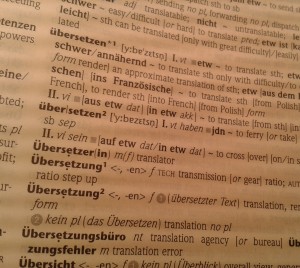 This blog post was inspired by a text we received from a customer we were to “just have a look at.”
This blog post was inspired by a text we received from a customer we were to “just have a look at.”
Surely the translator gave his or her very best. Nevertheless, the document was not fit for purpose. All the typical mistakes we see in these cases were present. The translation was too literal — the German text was too close to the English original. Words and even grammatical structures in some cases had been carried over inappropriately. Furthermore, the translator didn’t know enough about the topic. They lacked sufficient knowledge of the white paper’s subject matter. The result? A document that was difficult to comprehend and a chore to read.
A brief theoretical background can help us understand why this translation was doomed to fail.
Unequal equivalences
The central debate in the field of translation has always revolved around what is known as equivalence. There are two main types of equivalence recognized in translation studies. Formal equivalence exists when a translation reflects the linguistic structures and culture of the original document and fulfils the requirements of a reader of the source language text. A translation is said to exhibit dynamic equivalence when it conveys the essential thoughts expressed in the source text without translating word-for-word. The goal is to give the reader a text that reads naturally in the target language and culture and serves its purpose well.
With technical marketing collateral, the focus should always be on dynamic equivalence. The reader should be presented a text that carries out its intended function and does not appear foreign in the target language and culture. In other words, you shouldn’t be able to recognize that it’s a translation. This is also known as functional equivalence.
To achieve this type of result, one must of course have a command of both languages. But knowledge of the target culture and the subject matter is also indispensable. And therein lies the rub.
It’s important to understand the content, main points, and messages in the original text to be able to express them clearly. This requires an understanding of what is stated in the source document. But the translator must also understand the larger significance and purpose of the text — the communication objective — and know how to achieve this communication objective in the target language.
We call this type of translation communicative because it is all about transporting meaning, about communicating with readers or listeners as the recipients of the message. From a formal perspective this is a free translation, but, if successful, it is no less correct than any other approach. All it does is accelerate the process of understanding for recipients, because it saves them having to first understand and decode the foreign linguistic structures of the original text.
A shortcut to the process of understanding, so that the message can be understood as quickly and easily as possible. That’s what’s important when we translate marketing copy — not that the source and target texts match up word-for-word.
